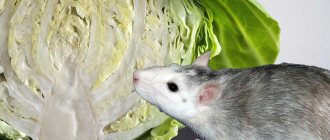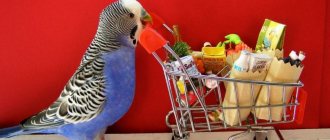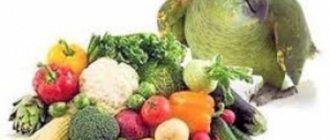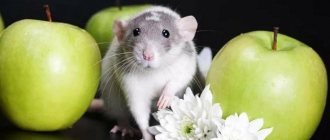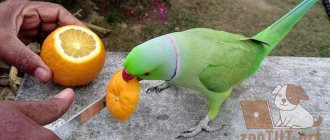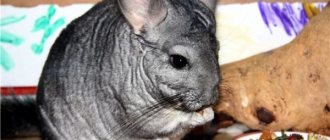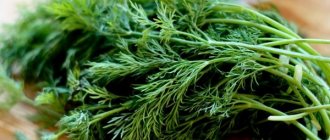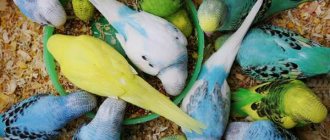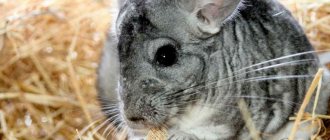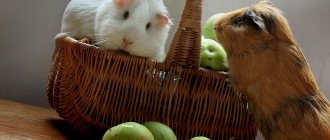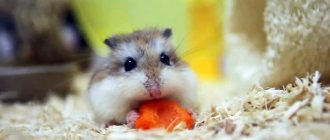Sometimes owners doubt which fruits can be given to parrots and which should be discarded. Birds living in their natural environment instinctively distinguish edible fruits from poisonous ones. You should not deprive your feathered pet of tasty and healthy treats - they are necessary for health. You can pamper your parrot with bright, sweet delicacies and reward him for good behavior.
What fruits can parrots eat?
Parrots can and should be fed fruits: they are rich in vitamins, sugars, fiber, and microelements. The list of permitted fruits is impressive; it contains most types of fruit crops. It is permissible to include in your daily diet:
- apples;
- pears;
- peaches;
- apricots;
- dates;
- grape;
- kiwi.
Feel free to give pears to parrots and apples grown in local orchards. The peel contains concentrated nutrients, so it is not advisable to cut it off. Beautiful imported apples are also allowed, but the wax should be thoroughly washed off with hot water.
Pineapple is high in vitamins, but this fruit is not on the table very often, but only on occasion. You can occasionally treat your pet to a ripe piece. Watermelons and melons are harmless only in August and September. There is no need to remove small bones - birds love to crack them open. There is no reason to wonder whether a parrot can have an orange. Citrus fruits are a storehouse of vitamin C. Birds readily peck at the white subcortex and partitions, and do not disdain the juicy pulp.
You shouldn't take risks by offering papaya and mango to your bird. These fruits are picked unripe to extend their shelf life. They contain substances harmful to birds. But pomegranate is good for the intestines: if a feathered pet pecks at the peel, it will not have inflammatory processes.
Attention! Regarding persimmons, so adored by parrots, one thing can be said: they are not prohibited, but only in a ripe state. If persimmon leaves an astringent aftertaste, it means it contains a lot of tannin, a compound with tannic properties. It can cause digestive upset in birds.
A little exotic
And among the “exotic” fruits, what fruits do parrots eat?
A pineapple
Parrots love this healthy product no less than people. You can include pineapple in your poultry menu only after carefully peeling it and selecting the core.
Banana
Overripe fruits should not be given to pets.
A nutritious and tasty overseas fruit is a source of potassium, calcium and magnesium, fiber, and starch. Ripe (yellow) bananas for wavy bananas are given in small pieces, after removing the peel. It is strictly not recommended to include unripe or, conversely, overripe fruits in the menu.
Bananas, grapes, and citrus fruits are especially good to give to budgies in winter.
Grape
There is a point of view that grapes are harmful to parrots. But it contains vitamin C, fiber, and carbohydrates necessary for bird health. Therefore, a “gentle” option is proposed: treat your pet with two or three berries a day, peeling off the skin and removing the seeds.
Grapes can be either white or black.
Two or three times a week, for variety, you can grind a few raisins into the food.
Pomegranate
The pomegranate fruit affects hematopoiesis, so you need to start carefully - with a few ripe seeds. Over time, the portion can be increased.
Melon
Like bananas, melons contain a high percentage of potassium, calcium and magnesium, as well as iron and phosphorus.
The nutritious melon culture has a beneficial effect on digestion and the cardiovascular system.
You should offer the melon after peeling it. Both the pulp itself and the seeds are useful.
It’s best to try this treat on yourself - to avoid poisoning, and it’s best to do it during the season.
Kiwi
The exotic fruit is considered a leader in vitamin C content. It should be given peeled to parrots.
Citrus
Citrus seeds can be included in your diet.
Citrus fruits, and these, as you know, include orange, grapefruit, lemon, tangerine, are powerful sources of vitamin C, trace elements, organic acids, fiber, and carbohydrates. It is allowed to give them with seeds, but be sure to peel them and cut them into pieces.
To increase immunity and protect against infections, the following vitamin supplement is practiced: a few drops of lemon juice are diluted in water poured into a drinking bowl.
All fruit and berry treats must be washed thoroughly, even if you are convinced of their environmental cleanliness.
The parrot does not want to eat fruit: what is the reason
Parrots are curious, but they are afraid of new things. If the bird has never seen or tasted the fruit, it will be difficult to convince it to eat. No matter what form you offer the appetizing fruits, the bird simply ignores the treat. Also, not all fruits are readily eaten by a parrot when it is sick.
Birds in pet stores and on the market are most often kept in an economy mode: cheap food is used, the cage is rarely cleaned, and several birds live in crowded conditions. Constant stress causes a feeling of fear and wariness in birds. They are afraid to try something new, and they get used to a simple grain mixture.
Daily norm
Rule one: food from the owner's diet is not intended for the bird. You need to purchase or prepare balanced food for your parrot from several types of cereals, nuts, and grains. The bird should consume 40 g of cereal mixture per day. We divide the daily norm by the number of feedings and get 10–15 g per meal. This is approximately 1 tablespoon. The cockatiel constantly eats something in the cage, so it should be limited.
To determine the diet of a domestic bird, you need to find out what cockatiels eat in their natural habitat. Their homeland is Australia, and their main food is the seeds of steppe plants. What do Corella parrots like to eat in their homeland? These are mainly cereals, nuts and greens. In addition to natural food of plant origin, parrots catch insects - this is a source of natural protein.
How to teach a parrot to eat fruit
When the chick is actively interested in everything around him, you need to start feeding him fruit. But what if you bought an adult with character? A wayward pet may stubbornly refuse succulent feeding, and this will have a bad effect on its health.
Like picky children, birds need to be introduced to new food gradually, patiently, unobtrusively. Experiment, act outside the box, be creative. There are many ways to outwit a cautious pet:
- Peel a ripe banana for your parrot, press grains from dry food into the pulp and place it between the bars of the cage. When pulling out familiar food with its beak, the pet will involuntarily try a banana.
- Chop or grate fruits, puree them, or squeeze out juice. Make fruit salads. Different shapes, textures and colors of food can attract birds.
- Mix small particles of fruit into the main feed. There is a chance that your ward will grab a new product along with the grain. Of course, such a mixture cannot be left in the feeder for a long time, otherwise it will spoil.
- Take the fruit holders, hang them and place them inside the cage. A parrot may mistake fruit kebabs on skewers for a toy. Perhaps, while playing, he will swallow a piece and taste it.
- Pour boiling water over dried apricots, prunes, dry apples, and figs. The bird may not like raw fruits, but it will love dried ones. Just not candied fruits - they contain a lot of sugar.
Worth a try! Demonstratively, gnawing on a juicy pear, apple, and peach with gusto. An inquisitive bird will want to know what the owner is eating that is so delicious, it will try to peck at a piece.
One of the easiest methods to introduce a bird to eating fruit is to organize collective feeding. In a single cage space, being close to its neighbors, the parrot will try to grab food before everyone else. It's okay if the cereal and juice fly all over the place. Some portion of the treat will still end up in the stomach.
Why can't you give too many apples?
Fruits contain large amounts of sugar. Metabolic disorders, as well as diabetes mellitus, can occur in parrots with excessive consumption of foods containing sugar. In addition, these fruits contain a lot of acids. Once in the digestive system, they irritate the mucous membrane of the digestive system, which causes inflammation. If you overfeed sour fruits, your parrot will have diarrhea, which will cause a lot of fluid loss and prevent the absorption of nutrients from the food.
On the fields! To avoid overfeeding, small parrots can be fed no more than 1/6 parts per day, large species - a little more.
Berries for the parrot
Parrots can eat not only fruits - they love to feast on berries. Make sure you always have fresh, dried or frozen fruits in stock:
- Rowan;
- currant;
- irga;
- rose hip;
- honeysuckle;
- raspberries;
- gooseberry;
- chokeberry.
At the beginning of summer comes the season of fragrant strawberries. It contains vitamin C and antioxidants, so its benefits are undeniable. The answer to the question whether a parrot can eat strawberries is only positive if the amount of nitrates does not exceed the norm.
The gifts of the swamp are tasty and healthy: cranberries, lingonberries, blueberries, cloudberries. Birds often peck at the berries, getting to the seeds - their favorite food.
Attention! Small parrots may choke on round berries while trying to swallow them whole. The treat must be crushed to protect the pet from death.
Frozen berries retain all the vitamins, so this method of preparation is best suited. You should not pour berries into the feeder straight from the freezer; let them melt, otherwise the bird will catch a cold. You can make compote without sugar from dry berries. Fruit and berry seeds are not garbage, they are needed for training and strengthening the beak. Birds have fun by chewing shells with their beaks.
Green feed
It must be remembered that it is not enough to give birds only grain mixtures; their diet should be supplemented with other ingredients. For example, green food. Fresh greens contain many vitamins, so they are very healthy.
What do budgies like? Birds really like to eat young tree branches; they happily eat buds, bark, and wood. In addition, parrots willingly eat leaves of vegetable plants, the so-called “tops” - young leaves of carrots, radishes, and lettuce. In summer there is no shortage of leaves and herbs. To know what grass budgies eat, you need to carefully read and memorize the list below.
In the summer you can pick the following plants: dandelion, clover, chickweed, bluegrass, fireweed, shepherd's purse, wheatgrass, plantain, nasturtium, timothy, strawberry leaves. Plants should be plucked away from roads and busy highways, and pets should be avoided. It is best to collect plants outside the city limits.
But it should be remembered that not all plants are useful for parrots, and some are even dangerous. Fans of feathered pets should remember well what is prohibited for budgies.
Some indoor plants are very dangerous for these birds; parrots can become poisoned if they eat them. Among these plants are amaryllis, hyacinth, azalea, hydrangea, periwinkle, dieffenbachia, cocoa tree, caladium, jasmine, narcissus, cana, bracken fern, nightshade, colocasia, poinsettia, crocus, laurel, ranunculaceae, oleander, ivy, philodendron, aeonium and etc.
Poisonous flowers: tulip, narcissus, poppy, peony, etc. Poisonous wild plants: buckthorn, white acacia, oak, burdock, juniper, horse chestnut, elderberry, etc.
Twig food is perfect for vitamin feeding in winter. Tree branches also help clean the parrot's beak.
The following branches are excellent for branch food: - Birch, - Linden, - Currant, - Cherry, - Apple, - Raspberry.
Among the trees there are also poisonous for small pets: lilac, bird cherry, coniferous trees, pear.
What vegetables should I give my parrot?
Fresh vegetables are an essential nutritional element for poultry. There is no point in giving boiled or stewed vegetables, since beneficial substances are lost during heat treatment. It will be great if you can not only teach your parrot to eat fruits, but also raw vegetables:
- carrots, they contain a lot of vitamin A;
- turnips, which can replace apples with their sweetness;
- beets, valuable for microelements;
- pumpkin, which has vitamins A, D, E, K;
- cucumber with its delicious seeds;
- zucchini, rich in dietary fiber;
- tomato with antioxidant - lycopene;
- bell pepper
If you doubt whether your budgie can eat cabbage, feel free to disassemble the cabbage into leaves and treat your pet. Cabbage is a long-lasting vegetable; in the cold season you cannot do without such feeding.
On a note! Instead of dry corn, you can give fresh grains of milky ripeness. Young cobs are not only tasty and healthy - they amuse the parrot, like a toy. After eating the grains, the bird can play with the stalk.
How much to give
Consumption of eggs is beneficial only if it does not exceed the established daily volume. Failure to comply with the standards will turn the consumption of the product into harm
It is important to consider that this is still far from the only component of a bird’s diet that contains the protein that parrots need. Birds also get this substance from low-fat dairy products:
- cottage cheese;
- milk, etc.
Therefore, you should control not only the consumption of eggs, but also the amount of protein your pet receives from the diet in general.
Oversaturation of a parrot's body with protein threatens such health problems as:
- apathy;
- inactivity;
- metabolic disease;
- digestive problems;
- obesity;
- passivity.
As ornithologist veterinarians emphasize, in order not to exceed the permissible amount of protein intake and to extract the maximum benefit from eggs in the form of microelements, it is recommended to give parrots an egg not completely, but one quarter at a time (the maximum dosage is half an egg, but only if you are sure that the bird does not get protein from other foods).
Giving your feathered pet a boiled chicken egg is not only recommended, but even required. This product contains useful substances and microelements that your parrot needs to maintain health and well-being.
But it is very important not to overdo it with the inclusion of this product in the bird’s diet. Exceeding the recommended intake will not bring any benefit; on the contrary, it will result in health problems
It is worth noting that for different stages of a parrot’s life, the established consumption standards differ, therefore, when drawing up a menu for a pet, it is important to coordinate it with the optimal consumption schedule drawn up by ornithologist veterinarians.
What vegetables are contraindicated for parrots?
Some vegetables are very harmful to parrots. For example, daikon and radish are too spicy to taste. This also includes celery, onion and garlic - they contain essential oils that are difficult for a bird’s stomach to digest. In large quantities, these components can cause serious diseases of the digestive system.
Raw eggplant is bitter and also contains solanine. True, there are practically no toxins in white varieties of this vegetable. If you want to offer your pet eggplant, choose from the white varieties. Potatoes contain a lot of starch, which is difficult to digest.
The best vegetables for budgies are considered to be home grown without chemicals.
Prohibited
Despite the wide range of exotic fruits permitted for use, some are strictly prohibited. These include:
- avocado,
- mango,
- papaya,
- pomelo,
- persimmon.
This is explained not only by the fact that they come to our country after ripening on the way. Their juice contains harmful alkaloids, glycosides, and papain, which can cause poisoning to the parrot. For example, mango fruit contains essential oils and tannins, which can negatively affect the well-being and health of the bird.
Persimmons are also rich in tannins, and avocados contain the cardiac glycoside persin, which can cause cardiac arrest.
“Fruit” prohibitions include treating frozen and cold fruits and various preserves. Candied fruits are also contraindicated for parrots.
What greens are good for parrots?
A balanced diet includes fresh grass. There is nothing difficult in supplying your pets with lush green stems even in winter. Salad greens grow beautifully in boxes on the windowsill, pleasing the eye with bright colors. In spring and summer, you can pick grass on lawns away from dusty roads:
- plantain;
- clover;
- nettle;
- knotweed;
- woodlice;
- burdocks.
The collected greens must be washed in running water, and the fleshy leaves must also be scalded with boiling water.
To maintain the health and cheerful mood of your parrot, fulfill your main task - feed it healthy and satisfying. Observe the behavior of your feathered pet, control the amount of food eaten, and adjust the diet taking into account established habits. And don't forget about delicious fruits and vegetables.
What to look for when choosing fruits and berries
When choosing fruits, you need to pay attention to their freshness. Exotic fruits that do not grow in a certain region or in the Russian Federation in general are very often picked unripe, sprayed with chemicals and then taken to store shelves. Because of this, the fruits need to be washed thoroughly, and it is better to remove the peel. Also, if possible, you should take fruits grown in your own garden or garden.
